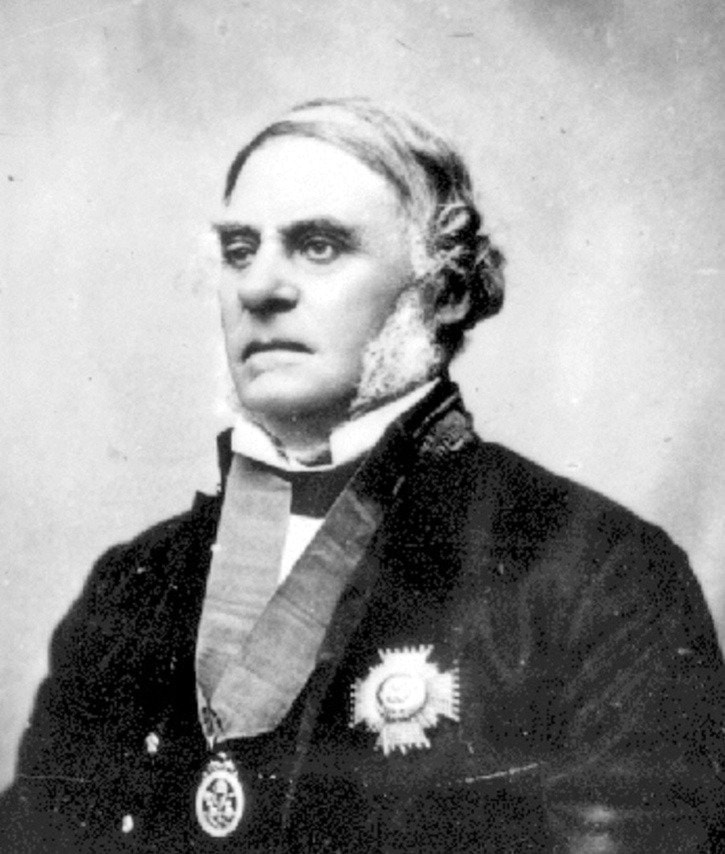Since I began writing these columns some months ago, one of the most rewarding aspects of their publication has been the response from readers.
I never need to check if they’ve been released by the Black Press because my inbox suddenly starts to “ping” with incoming mail.
Sometimes readers have topics they want addressed and about six weeks ago one reader who is relatively new to the Victoria area sent me a list of queries on local history matters, including the controversial “Douglas Treaties.”
The term is thrown around quite frequently in the context of the historical and contemporary relationship of European settlers with the First Nations of Vancouver Island, but their exact story is hazy for many Victorians.
These treaties are also known as the “Fort Victoria Treaties” and they refer to a series of documents drawn up between 1850 and 1854 by Sir James Douglas, who was then chief factor of the Hudson’s Bay Company and (as of 1851) governor of the Colony of Vancouver Island.
Fort Victoria was established in 1843 as a fur trading outpost with a small population of about 300 Europeans.
In 1849 the British government gave Vancouver Island official status as a colony, still governed by the Hudson’s Bay Company via a 10-year lease agreement. A mandate to encourage immigration and European settlement in the colony was part of the deal.
In order to accommodate these new colonists, Douglas had one major need: land.
Fort Victoria was a small place, only about two blocks square, and though there were relatively large farms scattered across the Victoria area, the majority of the land was still under the control of the indigenous people who had made this place their home for 10 or 12 millennia.
At the time, Douglas was considered by other European settlers to have a constructive, positive relationship with the First Nations of our island. Time, however, has not been so kind to the way we view the Douglas Treaties today.
Over four years, Douglas negotiated a total of 14 treaties, although he never used the term himself. He preferred to refer to them as “deeds of conveyance” or “sales,” but eventually the term “treaty” was upheld by the Canadian Supreme Court in 1965 as the British government had sanctioned him to negotiate on their behalf.
In total these treaties saw Vancouver Island First Nations including the Songhees, Esquimalt, Saanich, Kwakiutl, and Becher Bay Bands amongst others, “sign over” the rights to about 930 square kilometers of their traditional lands in the Victoria, Saanich, Sooke, Nanaimo and Port Hardy regions, in exchange for cash, blankets and clothing. No band received more than the equivalent of about $9,000 in today’s money.
They maintained the ownership of their villages and enclosed fields, and were permitted to hunt on unoccupied land and fish in their traditional territories, whether occupied by Europeans or not.
But how were these deals negotiated? Well, quite simply, Douglas had a translator verbally explain the content of the documents to the First Nations leaders, who in turn were asked to sign or mark an X at the bottom of a blank leger page. The actual terms of the treaties were usually added to the blank pages at a later date.
It seems clear now from indigenous oral histories that the First Nations did not know what they were nominally “agreeing” to. Most thought this was a peace treaty and not a sale of land. Others thought it was a confirmation of their village and agriculture sites, and therefore an arrangement so that they could live together harmoniously with the new settlers.
The inhabitation and occupation of land by First Nations was not and indeed still is not viewed within a European definition of ownership. Douglas’s assumption that “empty” land, unoccupied by fields or villages, was somehow disposable did not fit with indigenous principles of ancestral territorial rights.
Douglas stated that the indigenous peoples would have the same “rights and privileges” as the colonists once they complied with the land treaties, which certainly sounds equitable. Modern scholars, however, tend to view this as an attempt to ‘domesticate’ First Nations and, worst of all, disconnect them from the land upon which their cultural identity had been dependant for thousands of years.
Douglas stopped negotiating treaties in 1854 as the expansion of the colony was slow and relatively few settlers were arriving. This all changed when the Fraser River Gold Rush of 1858 hit, and 25,000 gold miners flooded to Vancouver Island and then over to the mainland in search of their fortunes.
Today, most of us who reside in the Victoria area live on land that was obtained as the result of the Douglas Treaties, and their validity is still regularly tested in court.
•••
Kate Humble is an historian and the education curator for the Maritime Museum of B.C. Questions can be sent to: khumble@mmbc.bc.ca.
